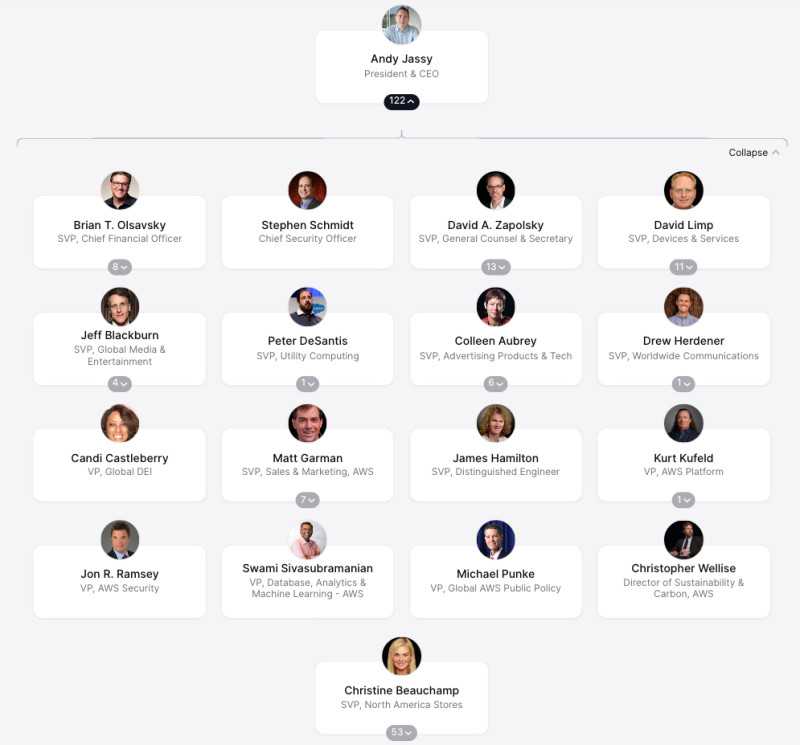What is a Common Corporate Hierarchy?
Table of contents
We’re diving into the traditional system of organization businesses use to level their employees by authority and responsibility.

In this guide, we’re diving into corporate hierarchy and structure: the traditional system of organization businesses use to level their employees.
Corporate Hierarchy and Structure
In this article, we’re diving into corporate hierarchy and structure: the traditional system of organization businesses use to level their employees.
At companies, there are often discussions about climbing the corporate ladder. But what exactly does that mean, and what does that ladder look like for employees at different levels?
The corporate ladder refers to the corporate hierarchy: an employment hierarchy of career advancement in which entry level positions sit at the lower levels and the scope of responsibility and leadership increases as the levels ascend.
In this guide, we’ll explore what a common corporate hierarchy looks like so you can better understand where you sit and how you can rise up in your own organization.
We’ll cover:
- What is a corporate hierarchy?
- Levels of corporate hierarchy
Let’s jump into it.
What is a corporate hierarchy?
According to Investopedia, the corporate hierarchy can be defined as “the arrangement and organization of individuals within a corporation according to power, status, and job function.” Organizations use this structure to standardize the levels of responsibility and clearly convey the chain of command.
Most corporate hierarchies resemble a pyramid. The most powerful person, typically the CEO, is at the top, and their subordinates sit underneath. At the bottom of the pyramid, we find those with the least amount of power — generally regular employees. This way, the corporate hierarchy structure outlines where decision makers reside and allows for clearly defined responsibility, authority, career paths, and leadership within the organization.
One example of such a corporate structure is Amazon. At the top, we find the President & CEO, Andy Jassy. Below him are the C-suite executives and other high-level decision makers. And below them — well, you get the idea. Here’s what the company’s organizational chart looks like:

Let's unpack the groups of professionals that constitute the rungs of a conventional corporate ladder.
Levels of corporate hierarchy
C-suite
At the top of the pyramid is the C-suite, also known as the C-level, aptly named because every job title in this stratum begins with “chief.” The highest echelon one can reach in an organization is the Chief Executive Officer, as every other member of the C-suite and the entire organization reports to them.
The executives that make up the C-suite are directly responsible for governing their respective departments by leading the strategy and decision-making. Common positions seen in the C-level include:
Tip: Read more about the CEO and all of the executives who report to them.
Upper management
Below the C-level of the corporate hierarchy is the leadership team, who are the managers of managers. This rung of leaders is responsible for more closely running the area of business they head up by delegating responsibilities to the team below them and providing supervision.
Depending on the size of the organization there can be multiple levels within this rank. Some of those positions include:
- VP or President
- Head (Such as Head of People and Culture or Head of Finance)
- Senior Director or Director
Middle management:
In the center tiers of the corporate hierarchy are the middle managers. Managers oversee small sections and teams of a department, balancing both hands-on work and the supervision of their direct reports. They ensure that project goals and deadlines are being met, hold their team accountable and offer guidance. Usually they will have “manager” or “team lead” in their title.
Entry level
At the lower levels of a corporate hierarchy are the entry-level positions. These employees are professionals with fewer years of experience who work as individual contributors (ICs), meaning they handle tactile tasks and have no people management responsibilities. Though they rank lowest in the corporate hierarchy, these individuals contribute significantly to the goals of an organization and the work that gets done daily.
ICs can typically be identified by words like associate, assistant, coordinator, analyst, specialist, or trainee in their job title. There are often still promotions within the entry level, where employees' titles are advanced to a title such as “Senior Associate” or “Software Engineer II.” Although the scope of influence and salary might increase with a promotion, an employee at this level would still not take on management responsibilities.
Tip: Want to learn more about job titles? Check out our guide on different job titles and how to use them.
Board of directors
Remember when we said everyone reports into the CEO? Technically that isn’t always true. There is one tier that sits above the C-level: the board of directors. While every enterprise does not need to have a board of directors, public companies are required by law to have one. This elected group of governors and trustees play a major role in the direction of an organization. The board represents shareholders, sets corporate management and policies, makes high-level decisions, and has the power to hire or fire the CEO.
Visualizing your corporate hierarchy and structure
Whether you’re early in your career or already at chief status, familiarizing yourself with the structure of a corporate hierarchy is helpful to better understand the management chain, growth trajectory, and lines of communication. For a visual of where you sit in your organization's structure, add yourself and your corporation to our community of public org charts.
Create your own free org chart today!
Show off your great team with a public org chart. Build a culture of recognition, get more exposure, attract new customers, and highlight existing talent to attract more great talent. Click here to get started for free today.


The ORG helps
you hire great
candidates
Free to use – try today